Minting NFT Art: A Step-by-Step Guide for Creators
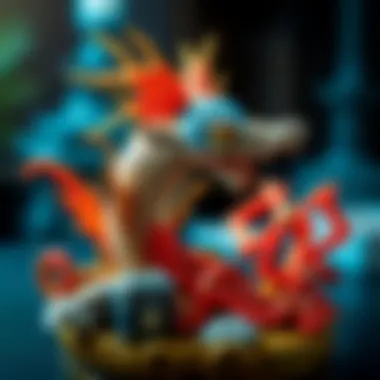
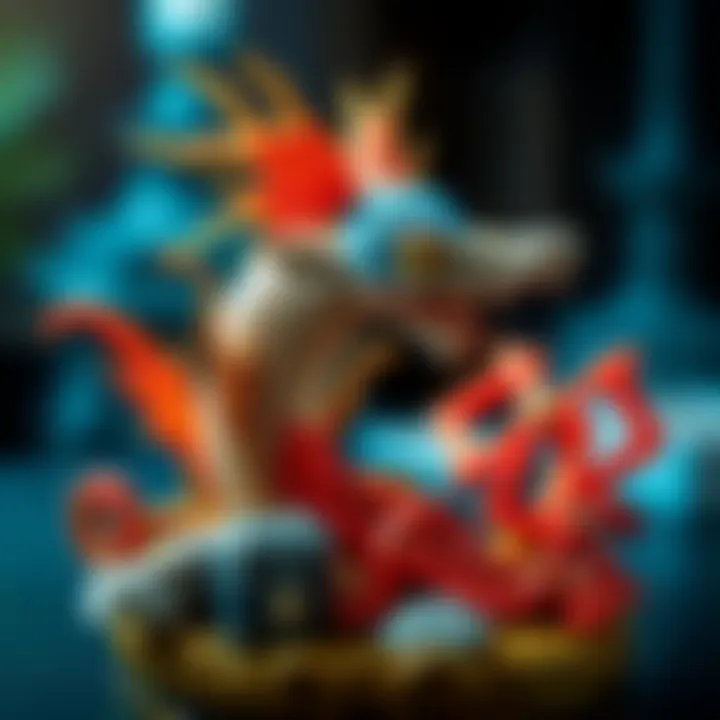
Intro
In recent years, the world of art has undergone a seismic shift with the emergence of Non-Fungible Tokens (NFTs). These digital assets have opened up new avenues for artists, allowing them to reach global audiences while retaining ownership of their creations. With the rise of blockchain technology, minting NFT art has become a well-liked means for creators to authenticate their work in the digital space. As interest in this unique form of art grows, understanding the nuances of the NFT landscape is essential for anyone looking to dive in.
Minting NFT art is not merely about technical jargon; it signifies a transformation in how we perceive and value art. Artists have a chance to monetize their talent directly, cutting out middlemen and giving more power to creators. With that said, the journey from an idea to a minted NFT involves several steps that can be as complex as they are rewarding.
The objective of this guide is to illuminate the process of minting NFT art from start to finish. By breaking down the critical components, shedding light on popular platforms, and providing insights into digital ownership, everyone—from seasoned creators to curious newcomers—will find something of importance here. We aim to demystify the blockchain, assist in choosing suitable platforms, and ultimately, help you understand the art market’s evolving landscape.
This guide also looks at the value of learning about cryptocurrency basics, as it serves as the backbone for understanding how NFTs function. Moreover, recognizing market trends can provide an edge when entering this exciting digital frontier. With that in mind, let's delve into the key principles before diving into the minting process.
Foreword to NFT Art
The rise of non-fungible tokens, or NFTs, has brought a seismic shift in the world of digital art. As artists, collectors, and investors navigate this changing landscape, understanding the fundamentals of NFT art becomes crucial. This section serves as a gateway into the fascinating realm of digital ownership, offering insights into its significance in the modern art world.
Defining NFTs and Their Relevance to Digital Art
Non-fungible tokens are unique digital assets that represent ownership of a specific item or piece of content on the blockchain. Unlike cryptocurrencies such as Bitcoin or Ethereum, which are interchangeable, NFTs stand out by their distinct characteristics. Each NFT has a unique identifier that differentiates it from any other.
The relevance of NFTs in the digital art space cannot be overstated. They enable artists to sell their works directly to consumers, eliminating intermediaries and enhancing potential profits. Furthermore, the blockchain technology that underpins NFTs provides transparency and security, allowing artists to retain control over their creations.
Artists can embed royalties within NFTs, ensuring that they receive a portion of future sales whenever their work is resold. This points to a significant advantage for artists; where traditional art markets often marginalize creators, NFTs breathe new life into the equation, offering fair compensation. Additionally, the NFT trend has democratized art ownership, making it accessible to a broader audience.
"NFTs are introducing a new paradigm for ownership in the digital world, challenging the traditional norms of how art is created, sold, and traded."
The Evolution of Digital Ownership
As technology continues its rapid advance, the concept of ownership has evolved significantly. In the early days of the internet, “ownership” of digital content was often an abstract idea. Many people downloaded images, music, and videos without any clear rights or compensation for creators. Piracy was rampant, and artists struggled to protect their works.
With the advent of blockchain technology, however, the rules have changed. Digital ownership now has a tangible aspect thanks to the decentralization and security offered by blockchains. In this new environment, artists and creators can establish clear ownership and transfer rights for their work. Each transaction is recorded on the blockchain, leaving a transparent and immutable trail of ownership history.
This evolution reflects a broader shift in societal attitudes towards ownership. Consumers are beginning to view digital assets as valuable commodities worth preserving. The ability to collect, trade, and invest in digital art has become a tangible reality. This transformation not only empowers artists but also shifts how collectors perceive their investments. Owning a unique digital piece now carries esteem and value, akin to holding a rare painting or sculpture.
In summary, as we delve deeper into the aspects surrounding NFT art, its inherent value becomes clearer. With an understanding of NFTs and the evolution of digital ownership, we can better appreciate the opportunities and challenges that come with minting and trading digital artworks.
Understanding Blockchain Technology
Understanding blockchain technology is vital, especially in the context of minting NFT art. The blockchain serves as the backbone of digital ownership, giving artists and collectors a transparent, secure way to verify authenticity. In a world saturated with digital copies, this technology ensures that each piece of digital art can be uniquely owned, establishing a new paradigm in the art market.
The benefits of blockchain in the NFT space are manifold. For one, it proves the provenance of a piece, which is becoming increasingly important in the digital age. Artists can track their work’s journey from creation to sale, offering peace of mind that their original digital pieces are not being misrepresented. Furthermore, the decentralized nature of blockchain prevents censorship or undue control by a single authority, allowing for a more democratized art marketplace.
Considerations to keep in mind when exploring blockchain technology include the environmental impact of some blockchain systems and the varying transaction fees. 🤔 While platforms like Ethereum dominate the NFT space, they also come with high gas fees that can be prohibitive for many artists. This evolving landscape also involves keeping abreast of different chains that are becoming more eco-friendly or cost-efficient, such as Flow or Tezos.
"Blockchain is not just a technology; it's a movement towards decentralization and democratization in art and beyond."
Being well-versed in the intricacies of blockchain technology is crucial for anyone looking to navigate the NFT art scene successfully.
How Blockchain Works
At its core, blockchain is a decentralized ledger that records transactions across a network of computers. Each block in the chain contains data—like transactions—along with a timestamp and a reference to the previous block, linking them together. Imagine it as a digital notebook, where every page is a block containing new information that can't be altered without consensus among network participants.
When an artist mints an NFT, they create a unique token that signifies ownership of a specific digital file, like an artwork. This token is recorded in a block on the blockchain. Once the block is filled, it's added to the chain, making the information permanent. All participants in the network can see these transactions, providing transparency. This immutable nature means no one can go back and change the details of ownership or authenticity, providing security against fraud and theft.
Smart Contracts and Their Role in NFT Minting
Smart contracts are another essential element of blockchain technology. These are self-executing contracts with the terms of the agreement directly written into code. They run on the blockchain, which means they are tamper-proof and automatically enforce the agreed conditions when the specified criteria are met.
In the realm of NFTs, smart contracts facilitate the minting process. When an artist creates an NFT, they essentially draft a smart contract that includes details about the artwork, such as its title, description, and any royalties for future resales. This means that every time the NFT changes hands, the artist can automatically receive a percentage of the sale, ensuring ongoing compensation for their work.
Using smart contracts not only streamlines the minting process but also protects the interests of both the artists and collectors by ensuring that the terms of the sale are clear and enforced without intervention.
In summary, a solid grasp of blockchain technology and its components is not just beneficial—it's necessary for those diving into the world of NFT art. It creates a landscape of trust and transparency, enriching the entire creative experience for all involved.
The Process of Minting NFT Art
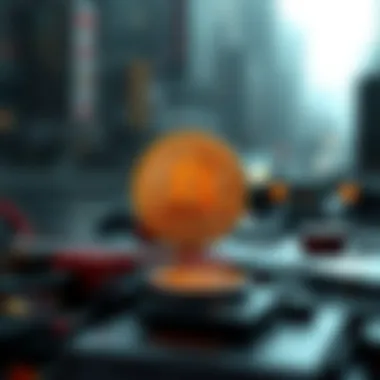

The digital canvas has changed the way various forms of art are created and perceived. Among the standout advancements in this arena is the ability to mint Non-Fungible Tokens (NFTs). But what does that really mean? Minting NFT art isn't just about making something shiny for the blockchain; it's about establishing ownership of a digital creation that feels truly unique in a world of duplicates. As artists and collectors dive into this realm, understanding the process of minting can serve as the cornerstone of engaging with digital assets effectively.
The importance of this section lies in demystifying the steps involved in taking a mere idea and turning it into a verifiable digital asset. Each phase contributes to an artist's journey, offering benefits such as increased exposure, potential revenue, and a new level of authenticity in the digital art landscape.
Selecting the Right Platform
Diving into the NFT waters? The first step is picking the right platform to host your artwork. There’s no one-size-fits-all here; different platforms cater to varying needs and preferences. Highlights include Opensea, well-known for its user-friendliness and vast audience, and Rarible, which offers a more community-focused approach. Artists who wish for a more curated experience might lean towards Foundation, where selection is more exclusive.
When choosing, consider factors like fees, audience engagement, and the sort of community that exists on that platform. Each decision will ripple out into your art's success.
Creating Your Digital Artwork
Creating the artwork itself can be a fulfilling endeavor, yet stepping into the unknown can be daunting. Whether you're working with software like Adobe Photoshop or utilizing Procreate on a tablet, the key is to allow your creativity to flow. You might choose a vibrant abstract piece or maybe something more traditional in its aesthetic.
A few quick tips:
- Experiment with different styles and mediums to find your voice.
- Don’t hesitate to seek inspiration from existing artists while ensuring your work remains original.
- Test the digital waters; sometimes, even a small sketch can evolve into something much larger and meaningful.
Uploading Your Artwork to the Chosen Platform
After crafting your masterpiece, the next step involves actually uploading it to the platform of your choice. It’s typically straightforward:
- Create an account if you haven’t already.
- Choose the NFT creation or minting option.
- Follow the prompts to upload your image file.
At this juncture, double-check the specifications required by the platform, such as file type and size limits. A smooth upload without technical hiccups can save you some headaches down the line.
Setting Up Metadata and Royalties
Once your artwork is on the platform, it’s time to configure essential details like metadata and royalties. Metadata can include the title, description, and any specific attributes unique to the NFT. Furthermore, setting royalty percentages is critical, allowing you to earn a portion of sales every time your art is resold. This open-ended revenue stream can be incredibly attractive for many artists looking to secure ongoing financial benefits.
Here’s what to keep in mind:
- Consider a compelling description; it can entice buyers.
- Specify the royalty percentage that signifies your continued stake in the artwork's future sales. Some platforms allow up to 10-15% royalties, which can add up significantly over time.
Minting the NFT
The final leg of this journey is the actual minting process – the moment your work becomes an NFT on the blockchain. When you click that mint button, you’re not just participating in blockchain history; you’re turning a digital file into a unique asset that can be bought, sold, or traded.
Before minting, ensure all details are precisely as you want them. Once you validate and confirm, it’s set in stone. Remember: minting can involve gas fees, so be prepared for potential costs associated with the blockchain transaction.
By understanding each step, creators can navigate the intricate process of minting NFT art with confidence. Ultimately, this journey from selecting the right platform to minting can empower artists to embrace the future of digital ownership.
Exploring Popular NFT Marketplaces
Understanding the landscape of NFT marketplaces is critical for artists aiming to mint and sell their digital art. Each platform serves a unique purpose and attracts different segments of the NFT community. Knowing the nuances of these marketplaces can make a big difference in the success of your art. Factors such as user base, ease of use, fees, and additional services like marketing and curation are key considerations for any artist entering this vibrant market. This section will provide details on some of the foremost NFT marketplaces, illustrating their individual strengths and considerations to aid artists and collectors alike.
Opensea: A Leading Marketplace
Opensea is often the first name that comes to mind when discussing NFT marketplaces, and for good reason. As one of the largest platforms in terms of user activity and inventory, it offers a comprehensive experience for both buyers and sellers. Opensea supports multiple blockchains, including Ethereum and Polygon, which expands accessibility for users.
- Diversity of Assets: Artists can mint NFTs ranging from art to virtual real estate.
- User-Friendly Interface: The layout is intuitive, which makes it easy for newcomers to navigate through various collections and functionalities.
- Gas Fees: Transaction fees can fluctuate but are generally lower on Polygon, making it an attractive option for cost-conscious creators.
Opensea's vast array of offerings means that artists have exposure to a larger audience. Yet, the crowded marketplace also means that standing out can be challenging. Thus, artists should consider effective branding and marketing strategies to ensure their work receives the attention it deserves.
Rarible: Community-driven NFT Platform
Rarible distinguishes itself through its emphasis on community involvement. It is a decentralized platform that allows users to govern decisions via a native token known as RARI. This characteristic fosters a sense of ownership among users.
- Creative Freedom: Rarible allows artists to mint NFTs relatively easily, encouraging creativity.
- Royalties: Artists designate their own royalty percentages, enabling ongoing revenue from resales of their works.
- Community Collaboration: By utilizing the token-based governance model, users have a say in the platform's direction and initiatives.
While Rarible offers vast flexibility, it is essential for artists to keep an eye on trends within the community. Engaging with fellow creators and collectors can enhance one’s visibility and foster professional relationships.
Foundation: A Curated Experience for Artists
Foundation takes a different approach by providing a curated platform for NFT art. This is appealing for artists seeking an environment that supports high-quality works.
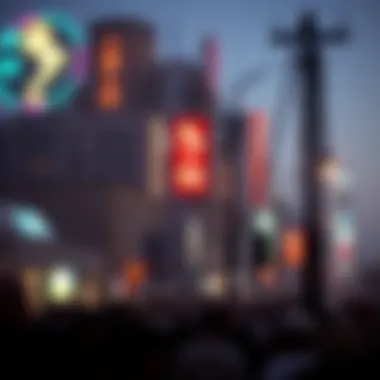

- Curatorship: Eligible artists need to be invited by existing members, ensuring that the works available are carefully vetted and of high quality.
- Auction Style Sales: Foundation utilizes an auction system that can create competitive bidding situations, potentially increasing the value of an artist’s work.
- Community Focus: This platform places a strong emphasis on creating a supportive community among artists, helping to promote lesser-known creators alongside established figures.
However, the invitation-only model means that emerging artists may find it difficult to gain entry, which might limit opportunities for some.
SuperRare: Showcasing Unique Digital Pieces
SuperRare sets itself apart by focusing on one-of-a-kind digital artworks. Every piece sold is exclusive, giving it a distinct edge in terms of value and desirability.
- Exclusivity: Each NFT represents a singular piece of art, fostering a high level of desirability among collectors.
- Tasteful Vetting: Like Foundation, SuperRare curates the artists accepted onto the platform, ensuring that the works displayed meet a high standard.
- Art-centric Community: SuperRare nurtures an artist community where creators can collaborate and support each other.
While the exclusivity attracts collectors, it might deter artists who thrive on producing multiple works. Yet for those who create unique pieces, SuperRare could be a goldmine.
For more information, check out Wikipedia's NFT entry or explore user discussions on platforms like Reddit.
Details about market trends and community insights can also be found on various community blogs and art platforms.
Engaging with these resources can deepen your understanding of NFT marketplaces and assist in making informed decisions.
Promoting Your NFT Art
In the ever-evolving landscape of digital art, promoting your NFT art is crucial. Simply minting your pieces is only half the battle; getting them noticed is where the real effort lies. Effective promotion can elevate your work from obscurity to the spotlight, attracting potential collectors and nurturing a dedicated following. Understanding and implementing effective marketing strategies is fundamental to carving out your niche in this competitive space.
Building a Personal Brand
Creating a personal brand in the context of NFT art is about more than just showcasing your work; it’s about establishing an identity that resonates with your audience. Your brand should reflect your style, ethos, and vision as an artist.
To start building your brand:
- Define Your Style: Assess what makes your artwork unique. Whether it’s bold colors or intricate details, make sure your style is recognizable.
- Craft Your Story: People connect with stories, not just products. Share the inspiration behind your work, your journey as an artist, and your aspirations beyond mere monetization.
- Consistent Messaging: Use the same tone across platforms. Whether it’s through your website, social media, or even speaking engagements, consistency builds familiarity.
By investing time in building a coherent personal brand, you can create a deeper connection with your audience, which can translate into increased sales and loyalty.
Leveraging Social Media for Marketing
In many ways, social media is the lifeblood of marketing for NFT artists. Platforms like Twitter, Instagram, and TikTok present unique opportunities to reach a global audience, showcasing your art and engaging with potential buyers.
Consider the following strategies:
- Engage with Your Audience: Regularly interact with your followers. Respond to comments, run giveaways, and ask for feedback on new works. Engagement fosters community and draws more eyes to your art.
- Utilize Hashtags: On platforms like Instagram and Twitter, hashtags can increase visibility. Research popular hashtags within the NFT space, but also consider niche tags that represent your style or themes.
- Showcase Process: Posting behind-the-scenes content can pique interest. Timelapses of your art being created, or discussions about your technique, can both inform and captivate.
By leveraging social media wisely, you can cultivate a loyal fanbase while simultaneously broadening your reach as a digital artist.
Connecting with Collectors and Communities
Building relationships is the name of the game in the NFT world. The art community thrives on connections, and forging genuine relationships with collectors and other artists can create opportunities that are invaluable.
To connect effectively:
- Attend Virtual Events: Participate in online galleries, auctions, or community forums. Engaging in these spaces can accelerate networking and provide insights into current trends.
- Join NFT Communities: Platforms like Discord and Telegram host numerous NFT communities where artists and collectors interact. Actively participating can lead to collaborations and, potentially, sales.
- Value Feedback: Soliciting and acknowledging feedback from collectors not only shows you care about your audience but can also guide the evolution of your artwork.
"In the NFT space, personable connections often lead to successful transactions. Build relationships, and the rest will follow."
The importance of these connections cannot be overstated. By engaging meaningfully with the right communities and individuals, you can significantly enhance your profile and market presence in the art world.
Legal Considerations in NFT Art
Navigating the legal landscape is an essential part of minting NFT art. As the digital art market expands, so do the concerns surrounding copyright, ownership, and licensing. Artists, collectors, and investors must understand these concepts to protect their interests and avoid potential legal pitfalls.
Understanding Copyright and Ownership
When you create digital artwork, it’s automatically protected by copyright laws. This means you have exclusive rights to reproduce, distribute, and display your work. However, minting an NFT doesn’t automatically transfer copyright.
- Copyright remains with the creator: Just because an artwork is turned into an NFT does not mean the artist loses rights to it. Creators retain copyright unless they choose to transfer it explicitly.
- Ownership does not equal copyright: Buyers of NFTs own a token representing the artwork, but not the copyright itself. This distinction is crucial, as it affects how the buyer can use the artwork. For instance, displaying the NFT in a personal collection is usually fine, but using the art for commercial purposes could lead to legal issues without permission from the original creator.
- Documentation is key: Keeping records of the original artwork’s creation and any agreements made with buyers helps clarify ownership and rights. This can be particularly useful in disputes.
It’s advisable for artists to include terms of use or licensing agreements in their NFT descriptions. This provides clear guidelines on how buyers can use or display the artwork. Being upfront about what is permitted can save a lot of trouble down the line.
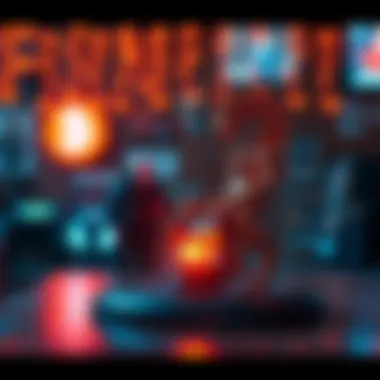
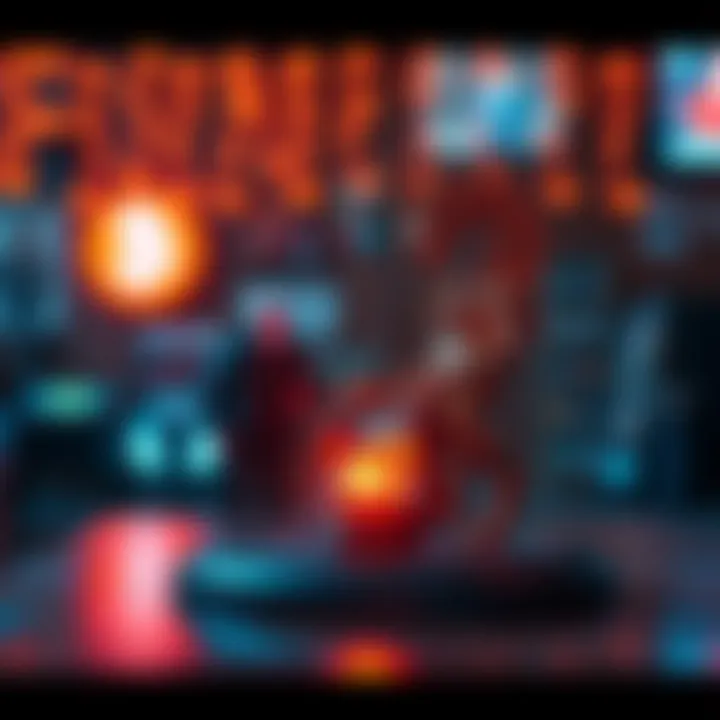
Licensing Your NFT Work
Licensing is another crucial aspect of legal considerations for NFTs. When artists mint their work, it’s important to think about what kind of rights they’re willing to grant to buyers.
- Types of Licenses: Common approaches include:
- Smart Contracts: NFTs utilize smart contracts to automate the licensing process. They can stipulate terms such as usage rights and even include conditions for royalties on resales. Make sure to stipulate this when minting your NFT. The idea is to make your intentions clear and enforceable.
- Consider a lawyer: If you’re unsure about how to proceed, consulting a legal expert in intellectual property can provide peace of mind. They can help draft clear licensing agreements that protect your rights as an artist while also making your work more appealing to potential buyers.
- Full rights: The purchaser gets all rights to use the NFT in any manner.
- Limited rights: The buyer can use the NFT for personal purposes only, such as display.
- Commercial rights: If an artist allows commercial use, consider charging an additional fee.
"Art is the most beautiful of all lies." – Claude Debussy
Potential Challenges and Risks
Venturing into the realm of NFT art is not all sunshine and rainbows. There are potential challenges and risks that must be navigated to ensure a successful experience. This section aims to shed light on these elements, as understanding them is paramount for anyone looking to mint and sell NFT art. By being aware of these challenges, artists and collectors can make informed decisions and develop effective strategies.
Market Volatility and Impacts
The NFT market is as unpredictable as a game of poker on a rollercoaster. Just when you think you’ve got it figured out, the curveballs come flying. The fluctuation in prices can catch even seasoned investors off-guard. Many factors play a role in this volatility, including market demand, the popularity of certain platforms, and even the overall sentiment surrounding cryptocurrencies.
- An artist might mint a piece and see initial sales at a high price, only to watch its value plummet overnight due to changing trends or an influx of new artists flooding the marketplace. This rollercoaster can leave creators feeling disheartened, particularly if they had pinned hopes on a stable income from their digital artworks.
- For collectors, buying NFTs can feel like jumping into a whirlwind. A piece that seems like a steal one day can lose its charm the next. Investing in NFT art can lead to serious financial consequences based on the volatility of the market. In navigating this space, setting a budget and knowing one's risk tolerance is crucial to avoid being swept away in the hype.
“In the fast-paced world of NFTs, it’s not just about riding the wave; it’s about knowing when to paddle back to shore.”
While there are certainly opportunities to capitalize on this volatility, it's wise to approach with caution and conduct thorough research. Monitoring market trends and being active in relevant communities can provide valuable insights and a sense of direction amid the chaos.
Security Risks with NFTs
Security is a big deal in the digital world, and NFTs are no exception. As wonderful as this technology is, it’s also ripe for exploitation and threatens the very fabric of the art ecosystem. Artists and collectors alike need to be aware of potential security risks that could derail their experience.
- One notable risk involves hacking. Art collectors can face scenarios where their digital wallets or platform accounts are compromised, leading to theft of valuable NFTs. Securing your digital assets is as critical as safeguarding physical ones. Using strong passwords, enabling two-factor authentication, and storing assets in secure wallets can significantly reduce the risk of such unfortunate events.
- Additionally, there are concerns about scams and fraud. With the rapid growth of the NFT space attracts bad actors. Some may offer dubious connections, fake platforms, or counterfeit art. It's essential to verify authenticity when purchasing or minting an NFT. Researching metadata, provenance, and previous sales can help mitigate these risks.
Future of NFT Art
The future of NFT art is a pivotal part of understanding the broader landscape of digital ownership and creative expression. As technology evolves, so too does the art world. Artists, collectors, and investors alike stand at the edge of an expanding frontier, and the decisions we make today can shape the trajectory of this innovative medium. One of the key aspects of the future of NFT art is its potential to democratize access to art. Unlike traditional art markets, which often prioritize established artists, NFTs can empower emerging creators to reach audiences directly, thus leveling the playing field.
Factors like sustainability, interoperability, and integration with existing digital platforms will play significant roles in the evolution of NFT art. Additionally, as mainstream adoption increases, there is a growing need for educational resources and community engagement to guide newcomers and seasoned artists through this complex terrain.
"The ability to create, sell, and distribute art via NFTs opens doors for a multitude of artists who have previously struggled to find their place in the traditional art market."
Trends in the NFT Market
The NFT market isn't static; it's continually evolving, influenced by various factors such as technology, user behavior, and cultural shifts. Currently, we see several trends making waves:
- Increased Market Fragmentation
The rise of niche marketplaces catering to specific types of art or collector interests instead of broad platforms allows for a more tailored experience. - Utility Beyond Ownership
More creators are incorporating utility into their NFT art, like access to special events or exclusive content, which can enhance value and engagement. - Sustainable Practices
With growing awareness around environmental concerns, there’s a push towards more eco-friendly blockchains and practices in minting NFTs.
In the coming years, we might also witness a rise in collaborations between artists and brands, leading to innovative projects that combine art with product marketing. Ultimately, these trends signal a shift towards a more diverse and inclusive NFT market.
Innovation in Digital Art Creation
Innovation in digital art creation is at the forefront of redefining artistic practices. As tools become more accessible, artists are exploring new mediums and styles. Cutting-edge technologies such as augmented reality (AR), virtual reality (VR), and artificial intelligence (AI) are enriching artistic expression. These tools allow for interactive pieces that blur the line between the observer and the artist, fostering an experiential relationship with art that was previously unattainable.
Collaboration with Technology: Advancements in software can lead to interactive installations or dynamic artworks that change based on viewer input, breathing new life into the concept of art as a static object.
Community-Driven Projects: With the advent of decentralized platforms, artists can engage with their audience directly, allowing for collaborative projects that reflect collective creativity. This collaborative approach can challenge the traditional notions of authorship, paving the way for community-centric creations.
In summary, the future of NFT art is not merely about transactions; it’s about the transformation of creative practices, audience interactions, and the reevaluation of what art can mean in a digital age. As this landscape continues to shift, staying informed and adaptable is crucial for anyone interested in leveraging this evolving platform.
Ending
As we reach the end of this comprehensive exploration of minting NFT art, it's important to underscore the significance of the journey we've taken together. Creating NFT art is more than just a technical process. It blends creativity with technology, transforming how we view ownership in a digital landscape.
Reflecting on the myriad of aspects discussed, we see that the foundation of NFTs lies deeply rooted in blockchain technology. This technological marvel has paved the way for digital ownership, giving artists unprecedented control over their work. The role of smart contracts cannot be overstated; they ensure that creators maintain rights over their art while enabling profit-sharing through royalties.
One of the core benefits highlighted in this guide is the diverse range of platforms available for artists. Each marketplace, whether it be Opensea, Rarible, or SuperRare, caters to different audiences and offers unique features. Understanding these options is crucial for any artist looking to make their mark in the NFT space.
Moreover, promoting your digital creations is just as important as minting them. Building a personal brand and connecting with collectors play a pivotal role in establishing credibility in this fledgling market.
The importance of legal considerations cannot be glossed over either. Knowing copyright laws and how to protect your work is paramount in today’s digital age. Equipping yourself with this knowledge helps mitigate risks associated with your art in the NFT marketplace.
Ultimately, navigating the landscape of NFT art presents challenges. From market volatility to security risks, awareness and preparation can safeguard your endeavors as you dive into this exciting domain.
In essence, minting NFT art is a journey filled with learning experiences. Whether you're an investor, developer, enthusiast, analyst, or student, the insights gleaned here prepare you to step boldly into the world of digital art ownership. As we look to the future, the possibilities are as expansive as your imagination.







